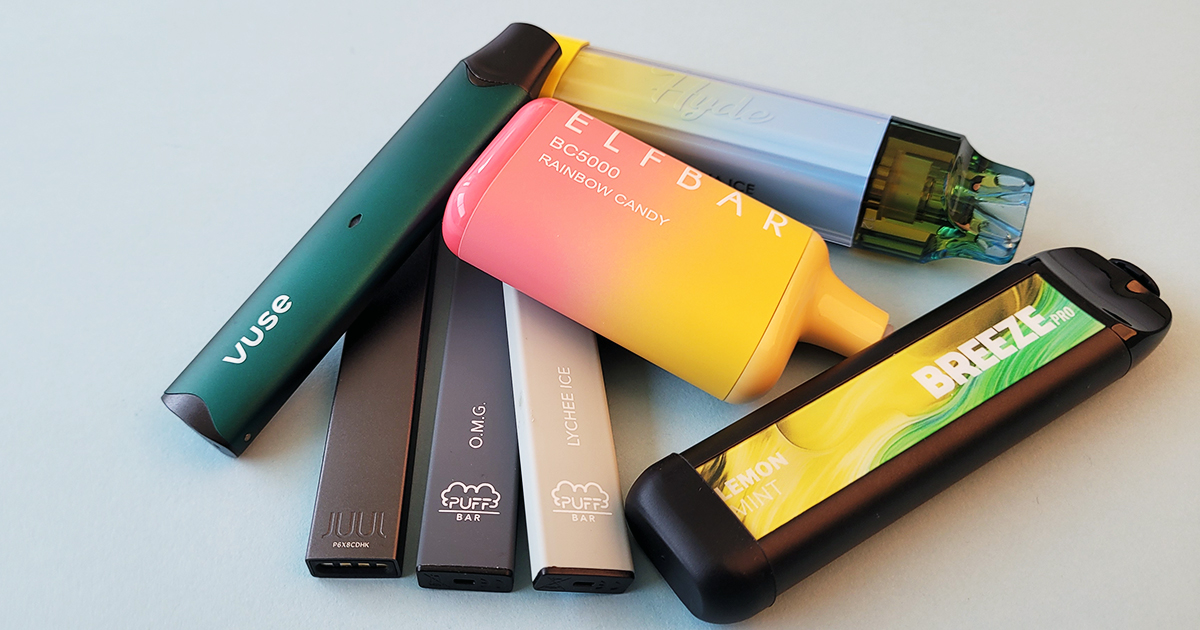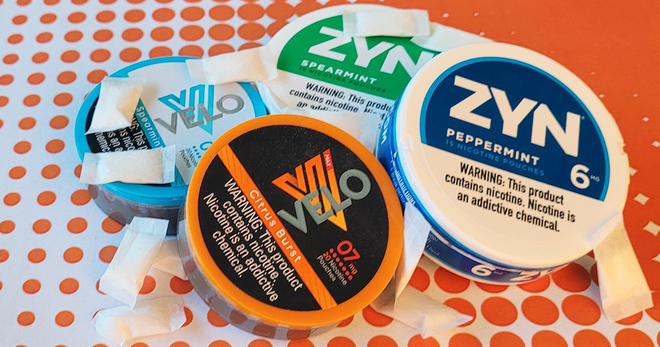More e-cigarettes are entering the market, with increasingly high concentrations of nicotine
Two concerning trends are appearing in national e-cigarette sales data: more unique e-cigarette products are available for sale, and they contain increasingly high concentrations of nicotine.
According to a Truth Initiative review of U.S. retail sales data, the number of unique e-cigarette products more than quadrupled from 453 to 2,023 between June 2021 and June 2022. This increase underscores how companies continue to flagrantly flout the regulatory process and launch new products without authorization from the U.S. Food and Drug Administration, a requirement to legally enter the market. At the same time, concentrations of nicotine in these products are climbing: a 2023 study of trends in nicotine strength among e-cigarette products found that the average concentration of nicotine in e-cigarettes has increased from 2.5% to 4.4% between 2017 and 2022.
The study looked at trends in nicotine strength across three e-cigarette product types, 580 flavors, and 10 manufacturers. The flavors represented in the study were classified into six types: candy or sweet, fruit, beverage (e.g., lemonade, types of soda), menthol (e.g., classic menthol or cool), mint (e.g., classic mint or spearmint), and original or classic tobacco. Nicotine strengths increased across all flavor types except mint, and were greatest among menthol-flavored products, increasing from 2.0% to 4.5% nicotine strength and beverage-flavored products, which increased from 1.2% to 5.3% nicotine strength.
Across disposable e-cigarettes, pre-filled and rechargeable devices, and e-liquids, the study found that average nicotine strength increased the most in disposable e-cigarettes, increasing from 2.1% to 4.8% compared to prefilled pods, which increased from 2.9% to 4.4% and e-liquids, which increased from 1.7% to 2.5%. Disposable e-cigarettes have gained popularity among youth in recent years and were the most used device type among middle and high school students in 2022. Disposable e-cigarettes, which are designed for one-time use and contain lithium batteries and heavy metals, are also creating large streams of toxic and hazardous waste.

The “nicotine strength arms race”
As e-cigarette manufacturers compete to sell the most products, many have raised their nicotine strengths, some as high as 6%.
Increased nicotine strength in e-cigarette products can be traced back to JUUL, the top-selling e-cigarette that debuted in 2015 with pods that contained 5% nicotine strength. That year, products with more than 5% nicotine concentration accounted for just 0.7% of the market share; three years later in December of 2018, they represented approximately 67.2% of the U.S e-cigarette market.
Without a national standard for maximum nicotine levels in tobacco products, this ongoing trend in nicotine strengths may put young people at an increasingly high risk for addiction.
Higher nicotine levels pose a threat to youth and young adult users
Average nicotine strength increased in e-cigarettes with flavors that were classified as menthol, fruit, candy or sweet, tobacco, and beverage flavor (e.g., lemonade or soda). Young people use flavored nicotine products at a higher rate, and a study from 2022 found that higher nicotine levels in flavored e-cigarette products is tied to greater dependence and lower motivation to quit.
Higher concentrations of nicotine in e-cigarettes also poses a threat to young people because vaping nicotine can intensify symptoms of depression and anxiety and increase stress levels.
As nicotine levels rise, prices drop
The increase in market share and sales of high nicotine e-cigarettes corresponds with falling prices. By 2022, products with higher nicotine levels became much cheaper or stayed the same while those containing lower nicotine concentrations became more expensive. Prices for products with nicotine strengths from 1-2% increased from $10.40 to $29.20, while those in the 4-5% range dropped in price from $20 to only $12.80 during the time period between 2017 and 2022. Because young people are more sensitive to prices, lower prices for high-nicotine e-cigarettes can lead to greater uptake and use of the products.
In addition, new research suggests that higher e-cigarette prices and taxes can reduce the number of days teens use e-cigarettes and decrease current e-cigarette use. This study adds important evidence about the potential of price increases to help alleviate the youth e-cigarette crisis and protect younger generations from a lifetime of addiction.
A national standard for maximum nicotine levels is needed
There are no limits on nicotine concentrations in e-cigarettes in the U.S. While the US Food and Drug Administration has announced plans to develop a proposed product standard would that establish a maximum nicotine level to reduce the addictiveness of cigarettes and other combusted tobacco products, the reduction of nicotine to non-addictive levels must ultimately extend to all tobacco products, including e-cigarettes. Truth Initiative also continues to call for the elimination of all flavored tobacco products from the market and stronger FDA regulations and enforcement.
More in emerging tobacco products
Want support quitting? Join EX Program
By clicking JOIN, you agree to the Terms, Text Message Terms and Privacy Policy.
Msg&Data rates may apply; msgs are automated.


